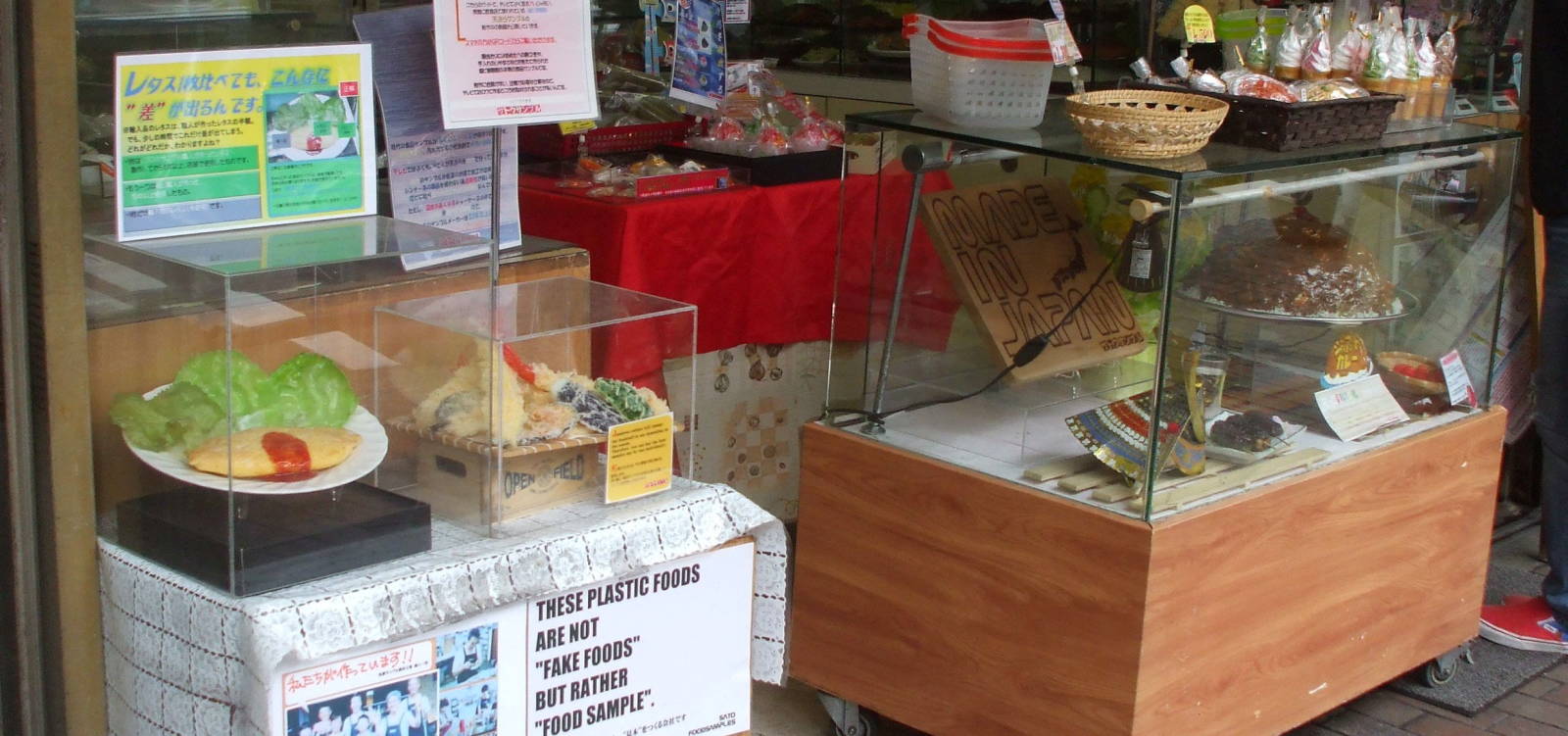
Kappabashi
Kappabashi — Restaurant Supplies and Replica Food
The Kappabashi district is known in English as "Kitchen Town", as it's a famous place to buy restaurant equipment and supplies. Its center is Kappabashi-dōri or Kappabashi Street, a few blocks west of the Sensō-ji temple complex. The area has over 170 restaurant supply shops offering kitchen equipment, furniture, lights and more.

Some shops sell サンプル (or sampuru), extremely realistic sample food that restaurants display to potential customers.
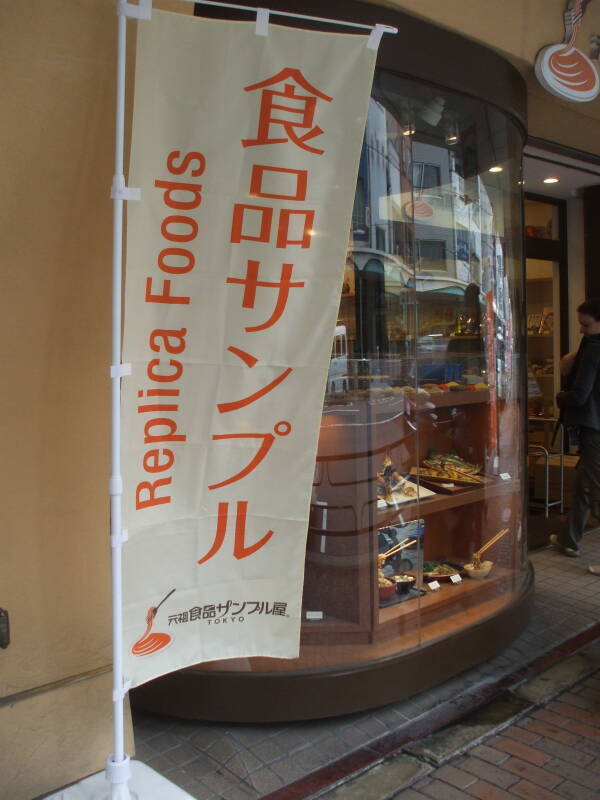
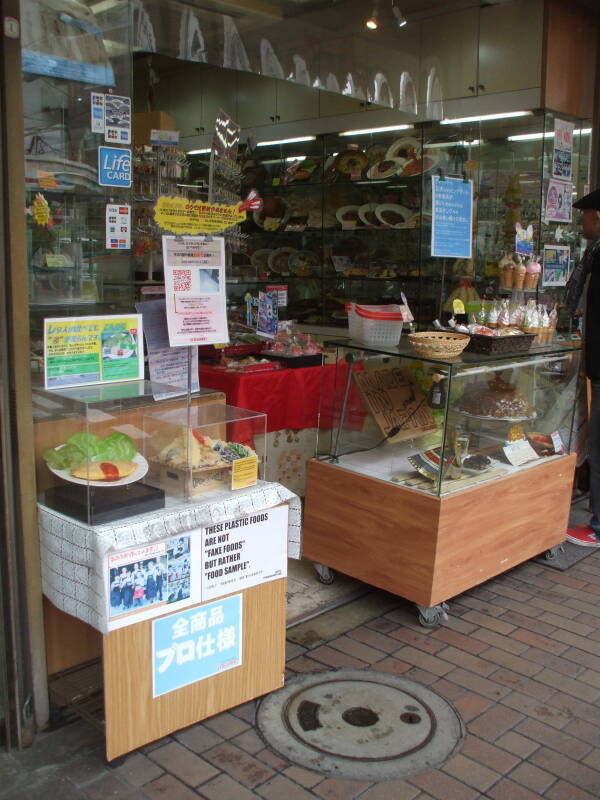
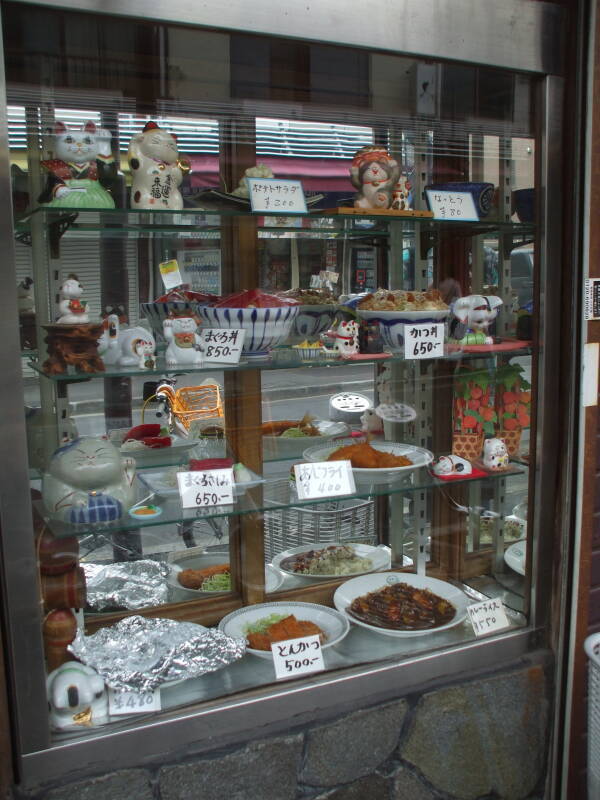
The concentration of specialized shops began in 1912.
As for the district's name, -dōri means "street" and -bashi means "bridge". So, Kappabashi-dōri means "Kappa Bridge Street".
Kappa can refer to a water demon, but it also means "raincoat". One theory is that residents would hang their kappa or raincoats on the local bridge railing to dry them.
Another is that it was named for a local merchant named Kihachi Kappaya. He funded the project of excavating Shinhori-kawa (or the Shinhori River) to manage and drain water into the nearby Sumida-gawa (or Sumida River). The river is now mostly buried underground.
Whatever the reason, the local merchants adopted the mythical Kappa water demon as a mascot. There are Kappa statues along the street, and Kappa cartoon faces on banners.


The Kappa
Japanese folklore describes many yōkai, or demons or imps. Many of these are associated with water. Shintō has many Suijin or 水神, or water deities. Japanese Buddhism describes a type of hungry ogre.
The Kappa or 河童 is the "River Child."
The precise description of the Kappa varies from location to location, but the common features are a shell and beak similar to a turtle plus the sura or "plate", a dish-like area holding water on top of the head. The sura always holds water and is the Kappa's source of power. If the sura is emptied while away from water, the Kappa loses its power and may die.
Below is a depiction of twelve forms of Kappa.
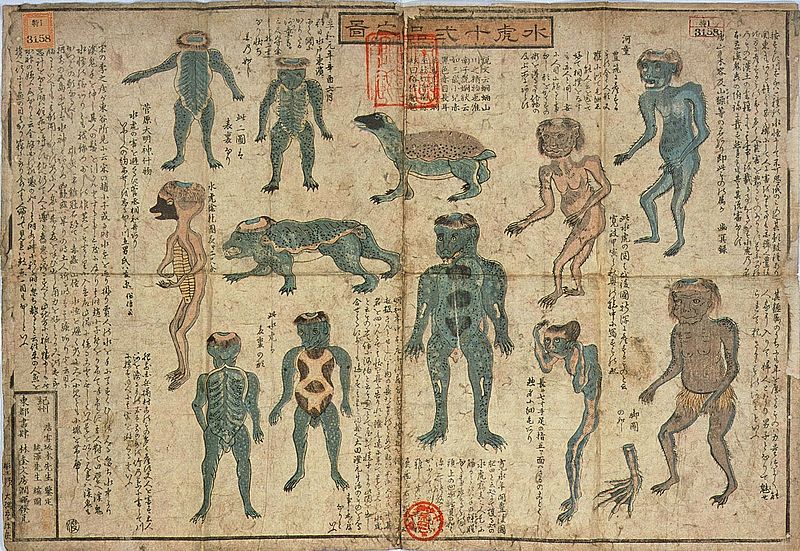
Illustrated Guide to 12 Types of Kappa, mid-19th-century Suiko juni-hin no zu, from Wikipedia.
The Kappa goes by many names. It's also known as the Kawatorō or 川太郎, or the Komahiki or 駒引, or the Kawako or 川虎, literally "river tiger". Regions have their own names, with Kappa being a generic term for what are known by dozens of local names. An equivalent is known in Chinese folklore as Shui Gui or 水鬼, "Water Ghost".
The Kappa is a trickster figure. Some of what they are said to do is merely mischievous, such as looking up women's kimonos. But they are credited with drowning people and animals (especially horses and cattle), raping women, and kidnapping children. They are said to sometimes drink blood and eat human flesh, especially the liver.
The Kappa is said to climb up inside the anus of a person using the toilet in order to eat or steal their liver or the shirikodama, a ball inside the anus said to contain the soul.
JapaneseWater
Demons
All is not lost if you encounter a Kappa, as long as you remember that they are obsessed with politeness. Bow to the Kappa and it will be obligated to return the gesture. That spills the water out of its sura on top of its head, rendering it unable to move. Refill the sura, and the Kappa will serve you forever.
Another thing to try would be to bribe the Kappa with food — eggplant, soba buckwheat noodles, or its favorite, cucumbers. People sometimes write their names, or their children's names, onto cucumbers and toss them into water believed to be infested with Kappas in order to safely swim or bathe. In some regions, eating cucumbers is thought to be a defense against the Kappa, but in others it is thought to be suicidal, turning yourself into what a Kappa would see as a tasty cucumber-filled treat. Related to this, the kappamaki is a sushi roll filled with cucumber.

Kappa depicted by Toriyama Sekien (1712-1788), a scholar and artist of Japanese folklore. His Hyakki Yagyō series was an attempt to catalog all forms of yōkai. From Wikipedia.
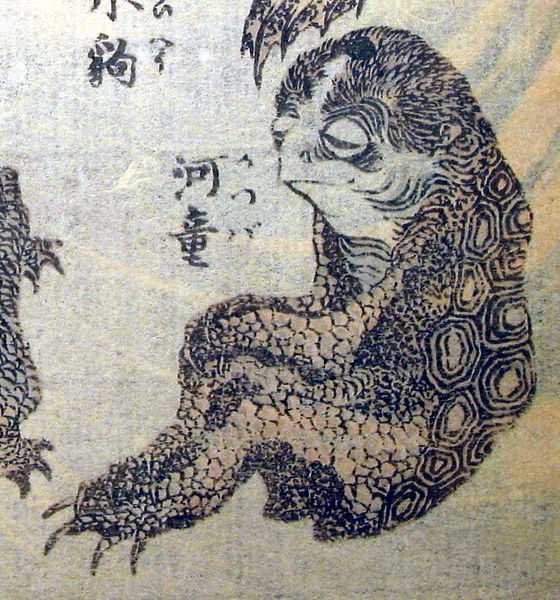
Kappa depicted by Katsushika Hokusai (1760-1849), best known for his print series 富嶽三十六景 or Thirty-six Views of Mount Fuji. From Wikipedia.
Once you have obligated a Kappa into being your life-long assistant, they can be very helpful with water-related tasks.
They can bring fish, and help farmers to irrigate their fields.
Kappas are also believed to be very knowledgable about human medicine, and to have provided the first explanation of how to set broken bones. And who knows, maybe they can help to sell kitchen equipment.
Kappa-dera Temple
The Sōgen-ji Buddhist temple is also known as Kappa-dera. A sign there with an English version of its text provides a coherent version of the story explaining the origins of the name "Kappabashi".
It says that at the beginning of the 19th century a raincoat maker named Kappa Kawatarō lived there. This would make him "Kawatarō the Raincoat Guy". The sign at the temple credits him with funding the project to construct drainage ditches. As the sign says: "The project was said to have been completed only with the assistance of the kappa living in the Sumida River whom had been helped by Kawatarō in the past. It is said that those who actually witnessed the river kappa thrived in business."
Let's visit the Sōgen-ji or Kappa-dera temple!. Two blocks west of the main kitchen shopping area, a narrow passageway leads off Kappabashihon street.
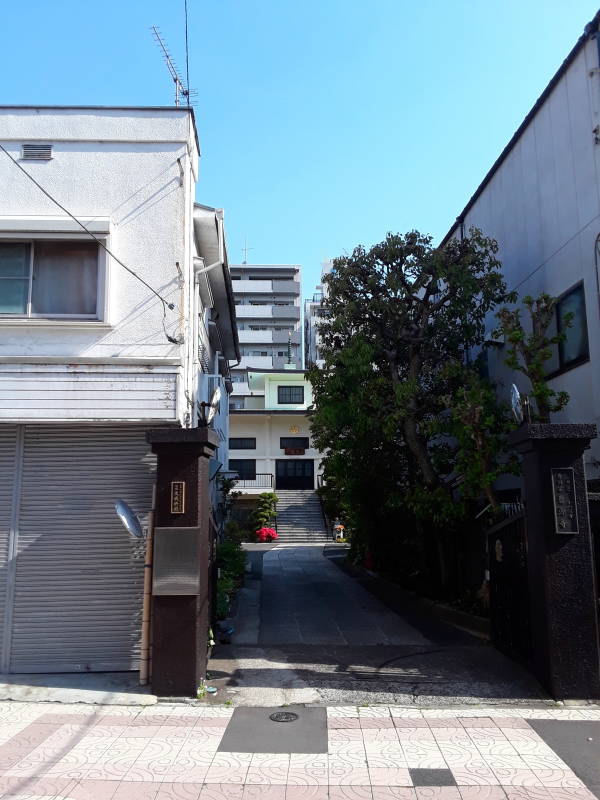
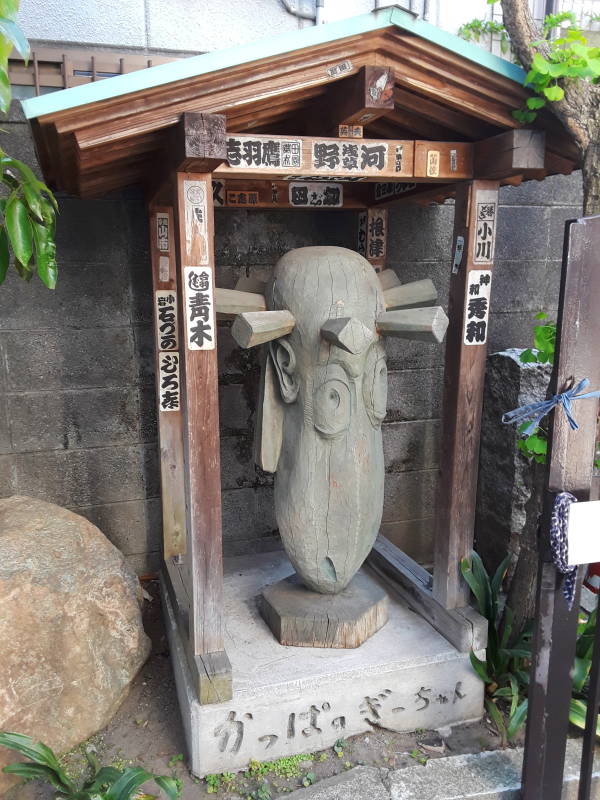
Here is the temple itself.
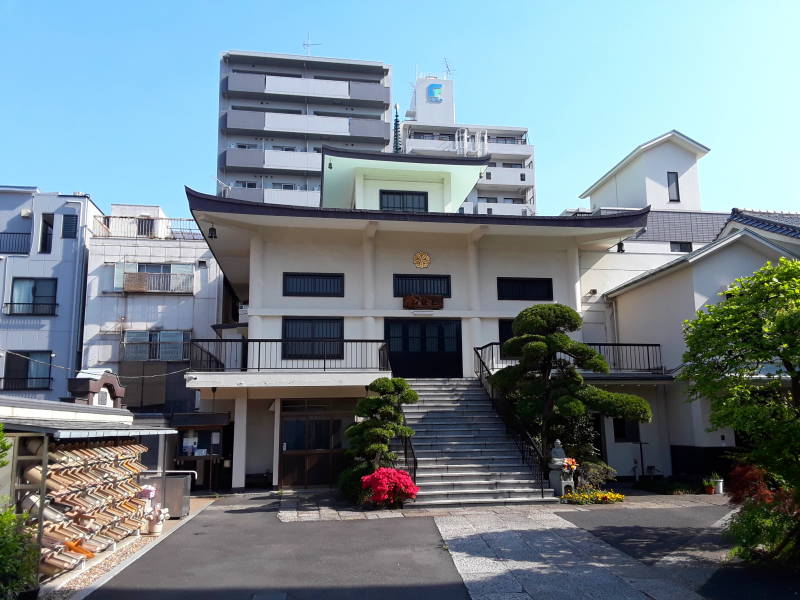
A large rack holds personalized water pails, befitting a temple focused on the kappa water demon.
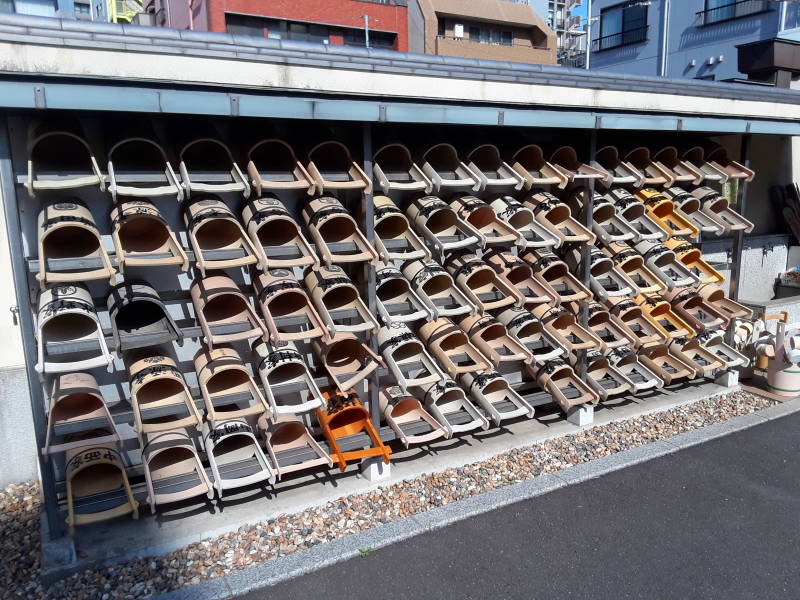
You can easily fill your pail.
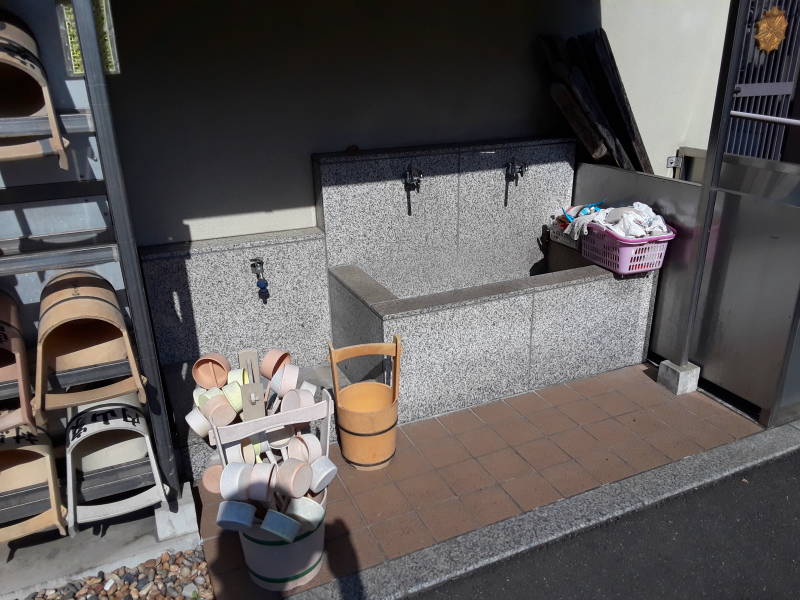
The temple grounds include a tightly packed cemetery.

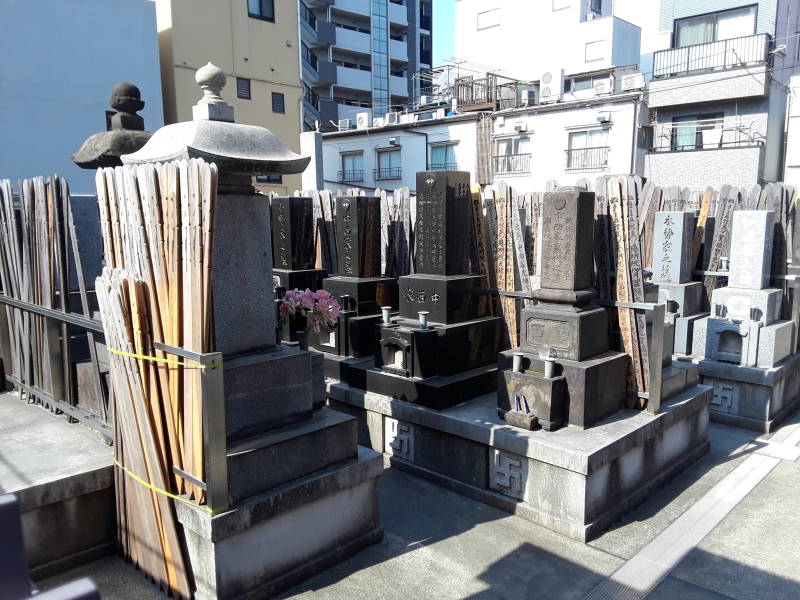
The grounds include smaller shrines.
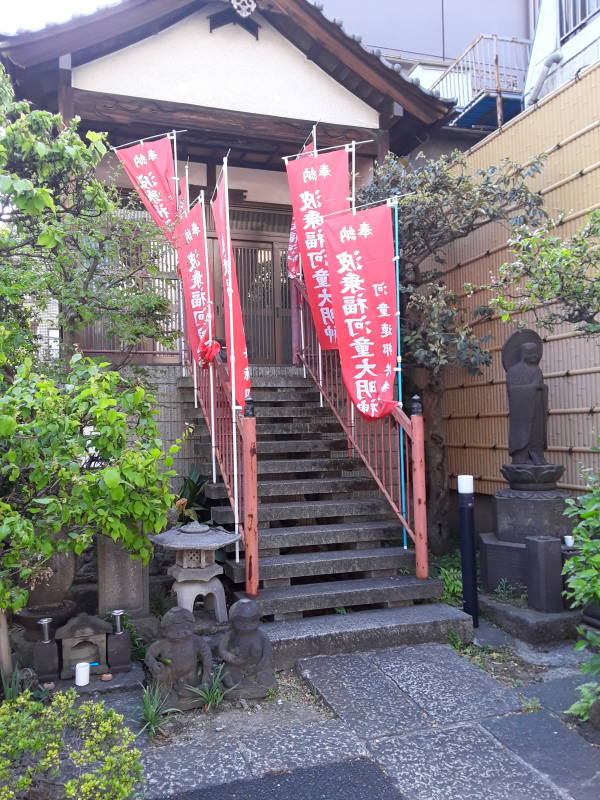
People have left cucumbers for Mr and Mrs Kappa.

Other Kitchen Towns
There is a similar Kitchen Town section in Osaka, near Osaka Namba Station. Kitchen equipment, replica food, furniture and signage, and so on. But no Kappa statues.
The above is specific to Asakusa in Tōkyō. Or maybe you want to explore other places in Japan.
Other topics in Japan:




































